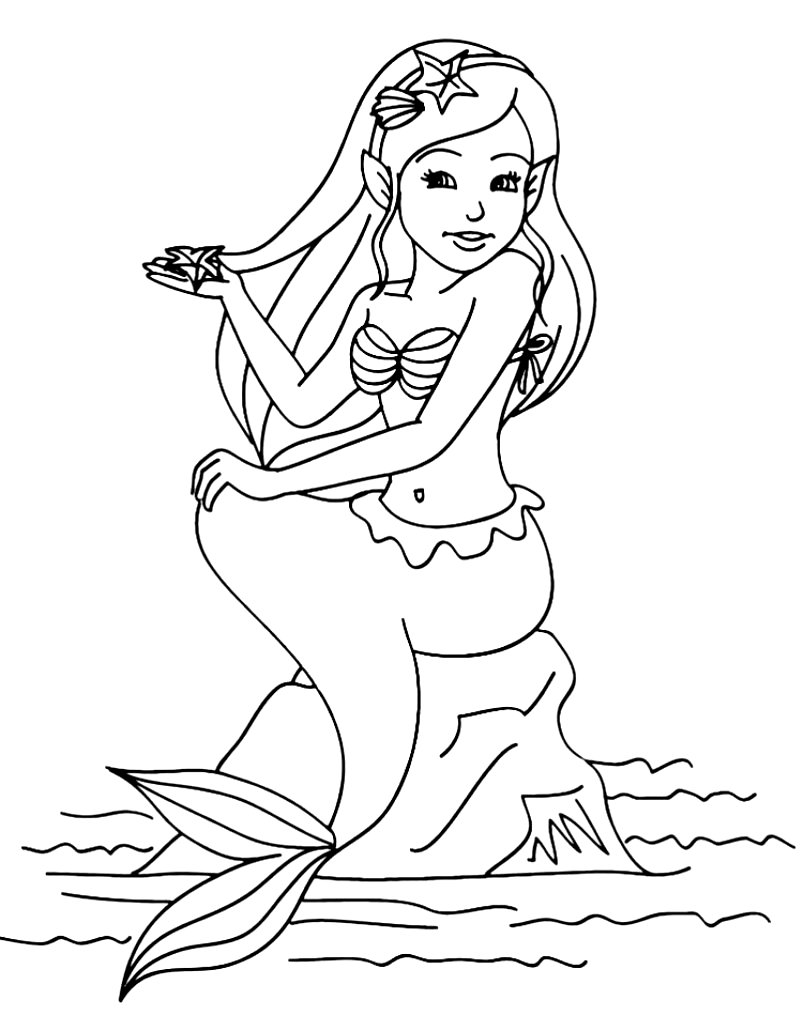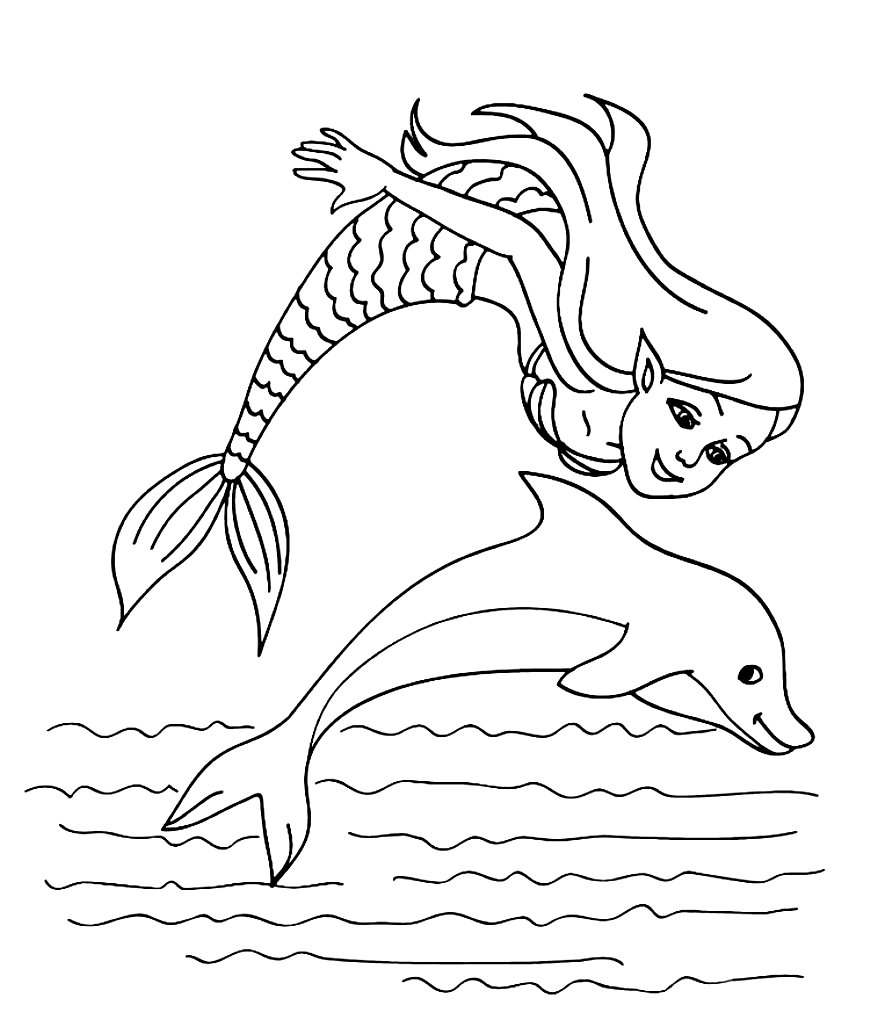Mermaid
Mermaid coloring pages are absolutely epic. These creatures occupy a very beautiful place in our imagination. We have carefully selected mermaid coloring pages for kids. It is the name of legendary sea creatures whose heads are shaped like a woman from the waist up and a fish from the waist down, and it is believed that they protect the waters they live in.
Mermaid coloring pages (free printable)
Mermaid is known as one of the most researched legends whether it is real or not. You may want to find out whether the mermaid you keep hearing about is real or not. Is the mermaid real? What are the information and stories about the mermaid legend? We have compiled all the details about the mermaid legend for you.
Characteristics of mermaids
Mermaids living in stagnant lakes and sea shores opened by water lilies and water irises also have men with similar characteristics. When they mix with people, they give themselves away by the wetness of their skirts. Although they are protectors of music, games and dance, like all fairies, who help good-hearted people, they are also known to sometimes drown young boys and girls by pulling them into the depths of water with their enchanting songs.
Mermaids in Mythology
Modern writers claim that the mermaid belief is associated with archaic mother goddess figures such as the Sumerian goddess Ninhursag, the Babylonian goddess Tiamat, and the Greek goddess Gaia. According to Babylonian mythology, when Marduk killed the ocean goddess Tiamat, the woman's body formed the first piece of land in the world covered with water. Tiamat, who is seen as the enemy of human civilization due to her symbol of the destructive power of nature, is undoubtedly the candidate closest to this definition among the archaic goddesses.
The oldest depictions of merpeople belonged to the Babylonians and depicted the upper part as a human and the lower part as a fish. The Mesopotamian sea gods Ea, Enki and the Syrian goddess of love Atargatis were depicted in this form. Historian Herodotus reported in the 5th century BC that the unnamed daughter of the Dnieper river god had a human body but a fish-tailed lower body, and that the Scythian kings believed that they were descendants of this woman.
Mermaids in Greek Mythology
In Greek mythology, creatures that fit the definition of mermaids are sea fairies called naiads. In the epic Argonautika written by Apollonius of Rhodes in the 3rd century BC, there is a story called Hylas and the sea nymph (naiad). The heroes, who traveled with the ship Argo to take the Golden Fleece from Colchis and bring it to Greece, got off when the ship reached a fertile land, while Hercules rolled up his sleeves to make a new oar. When Hercules sent a young boy named Hylas, whom he adopted, into the forest to look for water, the boy came across a naia in front of a water source. The naiad, who bent down to the spring to fill the water with the jug in her hand, held the child by the arms and pulled him in. Although Hercules heard the child's scream, he could not reach and save Hylas.
Mermaids in European Folklore
In sailor belief, a mermaid following the ship is considered bad luck, and vice versa, it is considered a sign of good luck. Again, a mermaid catching a fish from the sea and throwing it towards the ship is interpreted as a curse on some of the crew, and throwing it away is interpreted as meaning that the health of the crew will not be damaged. Although sailors sometimes saw mermaids acting friendly and helpful, they thought that this should not be deceived, as there were many stories about mermaids asking for help pulling sailors into the water and drowning them. In some sailor stories, it is mentioned that sailors married mermaids or were enslaved. In one of them, it is told that when a mermaid liked one of the crew members and wanted it, the captain, who did not want the ship to be cursed, had the man thrown into the sea, and the crew was able to return to land after living as the mermaid's husband for 60 years.
In the tale called "Seven Mermaids", compiled in the Frisian Islands in Northwestern Europe, a sailor was heard by the Seven Mermaids while getting off the ship, raising his hand towards the sea and promising that if he treated him well, he would never have a house on land. Years later, the sailor, who forgot his promise and became a rich man, settled on land and tried to marry a woman. Seven mermaids came out of the sea on the wedding night and sent giant waves to the man's house by the sea, causing him to fall into the sea and then took him into the depths with them.
In Anatolian folklore, mermaids are seen as evil creatures that should be avoided, for example, in the Köyceğiz region (Belen village), it is believed that creatures in the form of women come out of the sea and kidnap small children and use children as servants in their homes.
Is Mermaid Real?
A mermaid can be described as a creature whose upper body is human and whose lower body resembles a fish's fin. It is stated that in many cultures around the world, mermaids are real and have similar appearances. However, mermaids are legendary beings and cannot be said to live in real life.
Although mermaids are not real, they appear in many fairy tales, movies and even cartoons. It is still believed in some cultures that mermaids are real. Mermaids are expressed as a mythological concept known as half human and half fish. Mermaid characters, which are frequently used in literary works and movies, do not exist in real life. In this case, it is also possible to say that he is a mythological character and takes part in legends.
Mermaids are a symbol of the partnership between land and sea life. A legendary being that symbolizes many things between life and death. These creatures living in the oceans and seas are famous for trapping sailors and killing them with their magnificent beauty and magical songs.
Although it has a history of thousands of years, mermaid legends vary. Changing geography and culture causes different mermaid stories to be told. For example, in some narratives, mermaids symbolize life and fertility because they are young and beautiful. On the other hand, in other legends, they are seen as symbols of death and disaster due to their scary and dangerous nature. Mermaids are constantly changing, along with different legends that have emerged over thousands of years in different geographies.
The mermaid legend was first heard during the Assyrian period. Atargatis, the mother of Semiramis, known as the Assyrian queen, is an immortal goddess. However, she fell in love with a mortal shepherd. After the young shepherd she fell in love with dies, she throws herself into the lake to turn into a fish. Water, on the other hand, does not hide his nature and instead gives him the ability to breathe in water and a fish tail.
Atargatis is also known by different names. The mermaid legend is told in similar ways in many different cultures. It is also possible to say that it is a legend that is almost universal. Mermaid can be described as a legendary character in Greek mythology.
Mermaids can also be found in different forms in different cultures. Christopher Columbus stated that he saw mermaids during his voyage, but they were not as interesting as it was said and they were quite ugly. Even though mermaids are described with a different legend in each culture, it is possible to say that they generally have similar characteristics.















